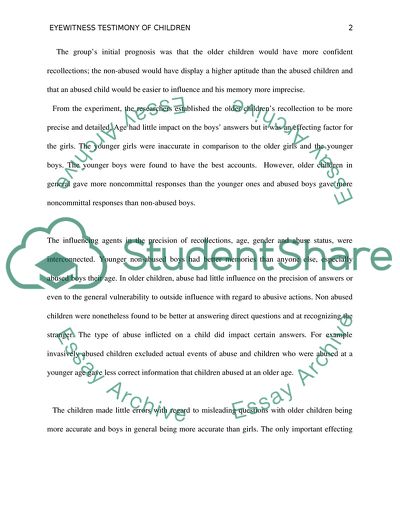Cite this document
(Eyewitness Testimony of Children Literature review, n.d.)
Eyewitness Testimony of Children Literature review. Retrieved from https://studentshare.org/psychology/1591173-child-eyewitness-testimony
Eyewitness Testimony of Children Literature review. Retrieved from https://studentshare.org/psychology/1591173-child-eyewitness-testimony
(Eyewitness Testimony of Children Literature Review)
Eyewitness Testimony of Children Literature Review. https://studentshare.org/psychology/1591173-child-eyewitness-testimony.
Eyewitness Testimony of Children Literature Review. https://studentshare.org/psychology/1591173-child-eyewitness-testimony.
“Eyewitness Testimony of Children Literature Review”. https://studentshare.org/psychology/1591173-child-eyewitness-testimony.


